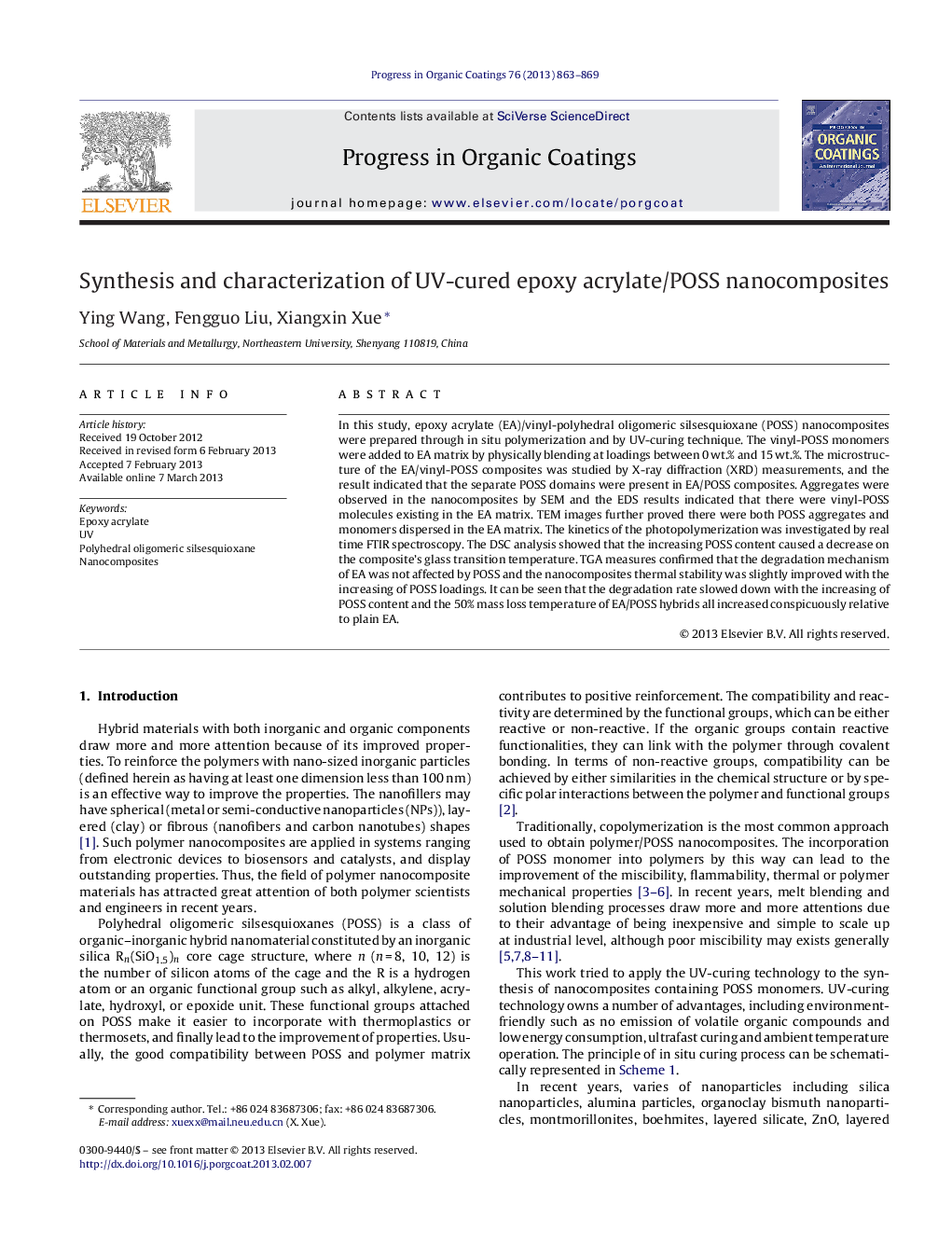| Article ID | Journal | Published Year | Pages | File Type |
|---|---|---|---|---|
| 693087 | Progress in Organic Coatings | 2013 | 7 Pages |
In this study, epoxy acrylate (EA)/vinyl-polyhedral oligomeric silsesquioxane (POSS) nanocomposites were prepared through in situ polymerization and by UV-curing technique. The vinyl-POSS monomers were added to EA matrix by physically blending at loadings between 0 wt.% and 15 wt.%. The microstructure of the EA/vinyl-POSS composites was studied by X-ray diffraction (XRD) measurements, and the result indicated that the separate POSS domains were present in EA/POSS composites. Aggregates were observed in the nanocomposites by SEM and the EDS results indicated that there were vinyl-POSS molecules existing in the EA matrix. TEM images further proved there were both POSS aggregates and monomers dispersed in the EA matrix. The kinetics of the photopolymerization was investigated by real time FTIR spectroscopy. The DSC analysis showed that the increasing POSS content caused a decrease on the composite's glass transition temperature. TGA measures confirmed that the degradation mechanism of EA was not affected by POSS and the nanocomposites thermal stability was slightly improved with the increasing of POSS loadings. It can be seen that the degradation rate slowed down with the increasing of POSS content and the 50% mass loss temperature of EA/POSS hybrids all increased conspicuously relative to plain EA.
► EA/vinyl-POSS nanocomposites were prepared through UV-curing technology. ► POSS nanoparticles were dispersed by form of aggregates and monomers in the EA matrix. ► The addition of POSS improved UV-curing rates and double bond conversion at the initial stage of UV-curing process. ► Thermal stability were improved by the addition of vinyl-POSS nanoparticles.
